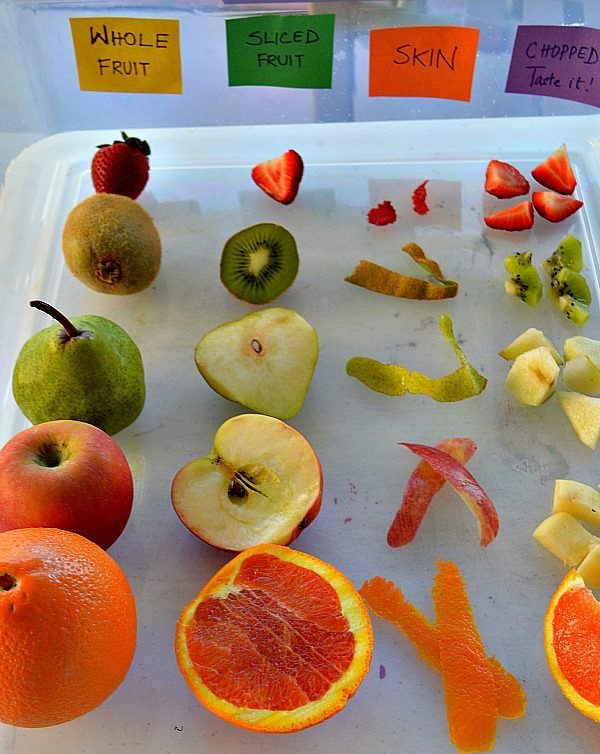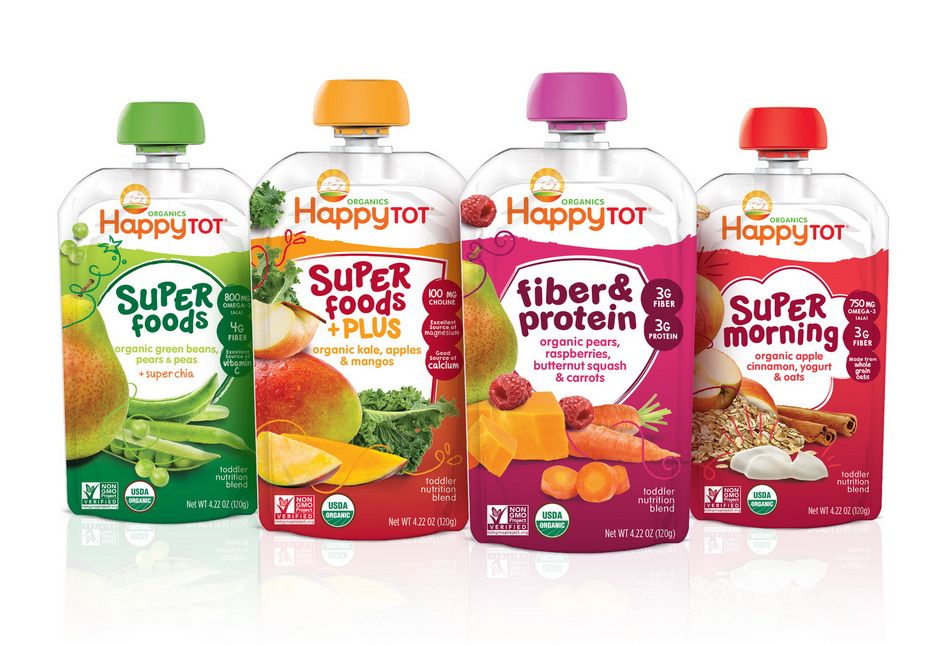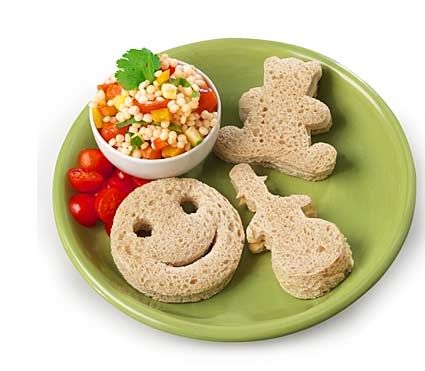Feeding a baby box turtle
How to Take Care of Baby Box Turtles
By Whitney Lowell | Updated September 26, 2017Proper housing and diet are important factors in raising baby box turtles. You can maintain a baby box turtle habitat outside or inside, depending on space and preference, as long as the cage is at least 4 feet long by 1 foot wide by 8 to 9 inches tall. Once you have the habitat set up, it's important to pick a healthy diet of animal proteins, fruits, vegetables, leafy greens and other vegetation.
Outdoor Habitat
If you're housing baby box turtles outside, predator-proof the enclosure. Use concrete blocks or wood all the way around the enclosure to create solid walls, and use a secure lid to prevent predators from getting into the enclosure.
Place the enclosure where it will receive a few hours of sunlight for basking and get plenty of shade, too. Plant vegetation along the sides of the habitat as well as throughout the habitat. Use leaf litter and logs for hiding, sleeping and hunting.
Fill a large, shallow dish with fresh water daily for soaking and drinking. Place the plate as close to level with the ground as possible so the little box turtles won't have any issues climbing into the water. If the inside of the plate is too tall, add stones to make getting out easier.
Spray the enclosure to make sure that the substrate is moist, but not soaked. Try a daily spraying routine, and adjust as necessary.
Indoor Habitat
If you prefer to house box turtles babies inside, consider a concrete mixing tub or a 50-gallon Christmas tree storage tub. Either is easy to set up. Otherwise, you can make an enclosure with finished lumber and line it with thick plastic, like a pool liner.
Use loose substrate that will hold moisture, such as finely shredded hardware mulch, loam compost, sphagnum moss or coco coir bedding. Do not use bedding that contains pesticides, perlite, manure, cedar, pine, corncob litter, play sand or alfalfa pellets.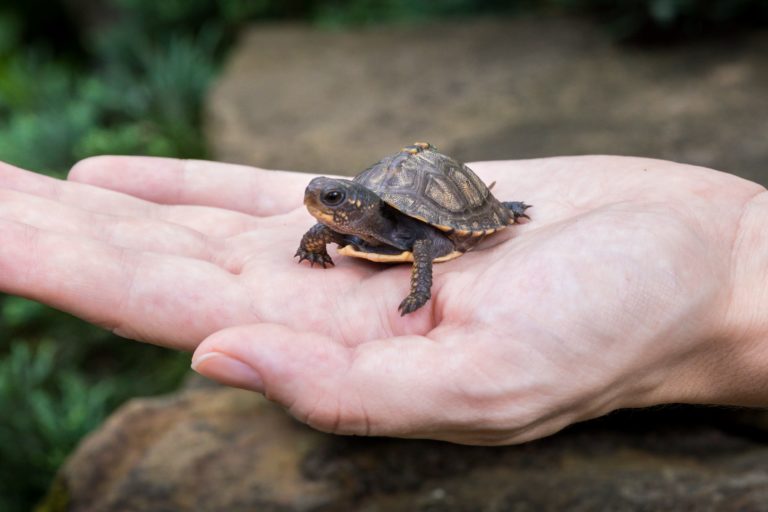
Box turtles are diurnal. They need UV lighting, so place full-spectrum fluorescent lights 18 inches above the habitat. To create a diurnal setting, set a timer to a 12- to 14-hour day.
Use a heat bulb on one side of the habitat to maintain a basking spot between 85 to 88 degrees Fahrenheit.
Mist the enclosure daily to maintain a humidity level of at least 50 percent. You can use a warm air humidifier or partially cover the enclosure with a lid to help hold moisture in.
Baby Diet
Box turtles, omnivores, will eat insects, some invertebrates, fruits and some other vegetation. A baby box turtle diet should be 50 percent animal proteins, 25 percent fruits and 25 percent vegetation.
Feed baby box turtles daily around mid-morning after they've had a chance to warm up. Place the food on a flat dish or tile so that baby turtles will be able to easily see and get to the food.
If you notice that your baby box turtles are not eating, try moving the food plate to a secluded location; many baby turtles are shy about eating.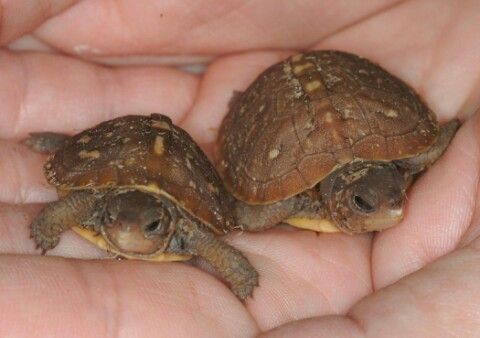 Try chopping the food into smaller pieces; large chunks can be intimidating for baby turtles -- stick with pea-size pieces.
Try chopping the food into smaller pieces; large chunks can be intimidating for baby turtles -- stick with pea-size pieces.
Don't feed the same items over and over. Feed a variety of foods from each food group:
- Animal proteins: night crawlers, snails, slugs, worms and crickets. Commercial turtle pellets and lowfat cat food can supplement proteins.
- Fruits: tomatoes, apples, melons, peaches, figs, grapes, mangoes and berries.
- Vegetables: green beans, peas, carrots, pumpkin, squash, bell peppers and okra.
- Leafy greens: endive, romaine and collard greens.
- Other vegetation: dandelions, leafy weeds, clovers and spineless opuntia pads.
Use a calcium supplement once a week. Never offer food that may have come in contact with pesticide or herbicide spray.
Growing Up Box Turtle
With proper husbandry and diet, a 2-inch-long baby box turtle will grow to be 8 to 9 inches and live 30 to 40 years in captivity. Care for juvenile and adult box turtles is similar to caring for a baby box turtle. The habitat that served your baby box turtles will suit one or two adult females.
Care for juvenile and adult box turtles is similar to caring for a baby box turtle. The habitat that served your baby box turtles will suit one or two adult females.
The main difference between caring for juvenile or adult box turtles and caring for baby ones is that you will reduce feedings from daily to two to three times a week during the juvenile period and after. Every box turtle is different, so when you notice your babies aren't eating as much of their daily meals, you can start alternating feedings.
Avoid housing two adult male box turtles, as territorial fighting and bullying can occur.
References
- California Turtle & Tortoise Club: A Guide to the Care of North American Box Turtles
- Exotic DMV: Indoor Care of North American Box Turtles
- American Animal Hospital Association: Box Turtle Care
Photo Credits
How To Take Care Of A Baby Box Turtle?
Are you wondering how to take care of your baby box turtle? Worry no more because we have come up with a guide that details everything you need to know about caring for baby box turtles.
Baby Box Turtles belong to the American Pond Turtle Family and are mainly found in North America. Their habits and appearance are similar to the tortoise. Baby Box Turtles require a great deal of care. So, keeping it as a pet is not an easy job to do.
I have put together this guide to help any who already has or plans to get a box turtle. It is important to remember that the first couple years of a turtle’s life are very formative and important for their future health and well-being.
The key steps to take care of a baby box turtle include providing a healthy diet, adequate enclosure, moist and humid environment, the right temperature, and proper lighting.
Taking care of a baby box turtle is much easier than caring for some other uncommon pets. If you want to get a different species of turtle, you should check out my more general article on caring for a baby turtle.
Provide a healthy dietFeeding your baby box turtle a healthy and balanced diet is an obvious necessity when considering your little one’s well-being. Their diet should ensure that all the nutrients your baby box turtle needs for growth and development are present.
Their diet should ensure that all the nutrients your baby box turtle needs for growth and development are present.
You should feed your baby box turtle daily. I would recommend feeding them a mix of insects/pellets and vegetables. You can also feed them fruit on a weekly basis.
My favorite food for box turtles is the Fluker’s Buffet Blend Box Turtle Food. It contains a mixture of fruits, vegetables, and mealworms.
To get a more in depth guide on how much to feed your baby box turtle, you should check out my article on how much to feed a turtle?
This diet should cover all the vitamins, minerals, and proteins needed for their development. Adjust their diet according to their health, age, and activity level. Just make sure that you don’t overfeed or underfeed your baby box turtle.
Indoor or outdoors enclosureIf you have the right climate for baby box turtles, they do well in a large and heavily planted outdoor enclosure. The outdoor enclosure will provide your turtle with fresh air, sunshine, and environmental enrichment.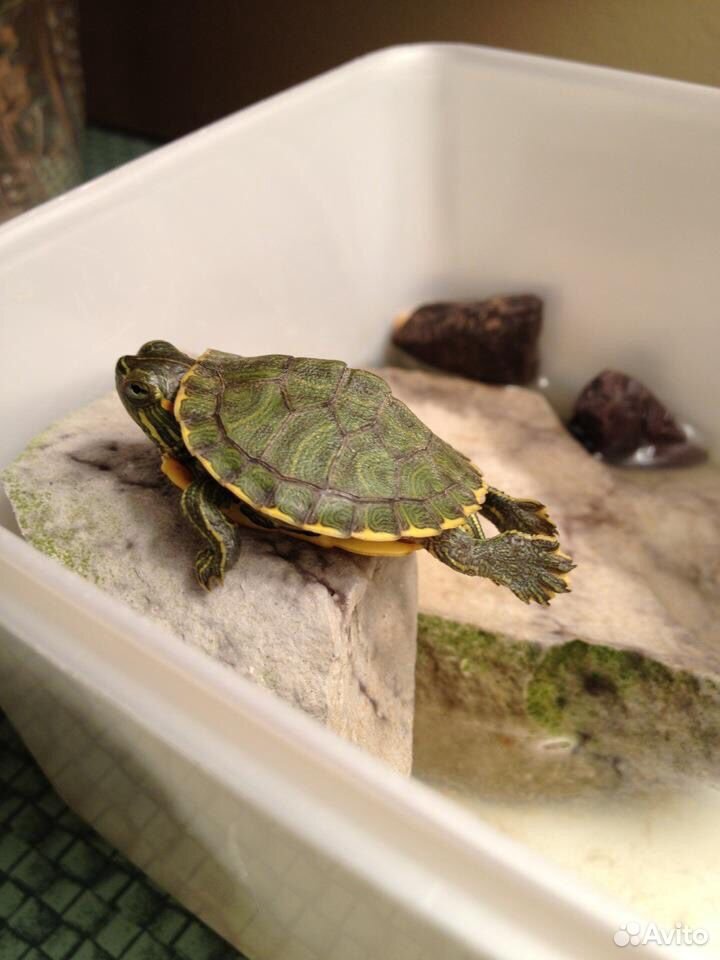 You just can’t replicate their natural habitat inside. If you do have an outdoor enclosure, make sure they are protected from predators. My favorite enclosure for box turtles is the REPTI ZOO 85 Gallon Terrarium.
You just can’t replicate their natural habitat inside. If you do have an outdoor enclosure, make sure they are protected from predators. My favorite enclosure for box turtles is the REPTI ZOO 85 Gallon Terrarium.
If you do put them in an inside turtle tank enclosure, I would recommend a size of at least 50 gallons. If you’re looking for cheap options, check out my article on cheap turtle tanks.
Give them a moist and humid environmentIn the wild, baby box turtles love to live near marshes, meadows, and freshwater. They can live in both dry and moist regions. Humidity should be kept at around 60 percent. You can also provide them pool time as they enjoy soaking in water. While they aren’t great swimmers, they do like to swim from time to time.
Give them privacyIf you have other pet turtles or tortoises in your home, you will need to house your baby box turtle away from them, preferably in its own enclosure. The charming little thing needs privacy and has its own specific care needs.
Also, make sure you include a lot of substrate in your tank.
Provide adequate temperature and good lightingProvide them enough warm light. If kept indoors, keep the lights on for eight to ten hours during the day, but turn them off at night.
You will need to keep their environment’s temperature between 75 and 80 degrees farenheight. When indoors, provide them with a bulb or heat lamp to keep them warm.
Clean environmentWhether you are caring for your box turtle indoors or outdoors, it’s important to keep its environment clean. You should remove any debris or build up from the tank on a weekly basis. You should also do a more thorough clean of the tank once a month.
Did you know? An interesting fact is that these charming babies already know how to take care of themselves. In the wild, they are on their own right from day one. When you bring home a baby box turtle, the hatchling will orient you to the basics of their care!
Final thoughts
With the proper care and attention, your box turtle will be able to live a long and healthy live.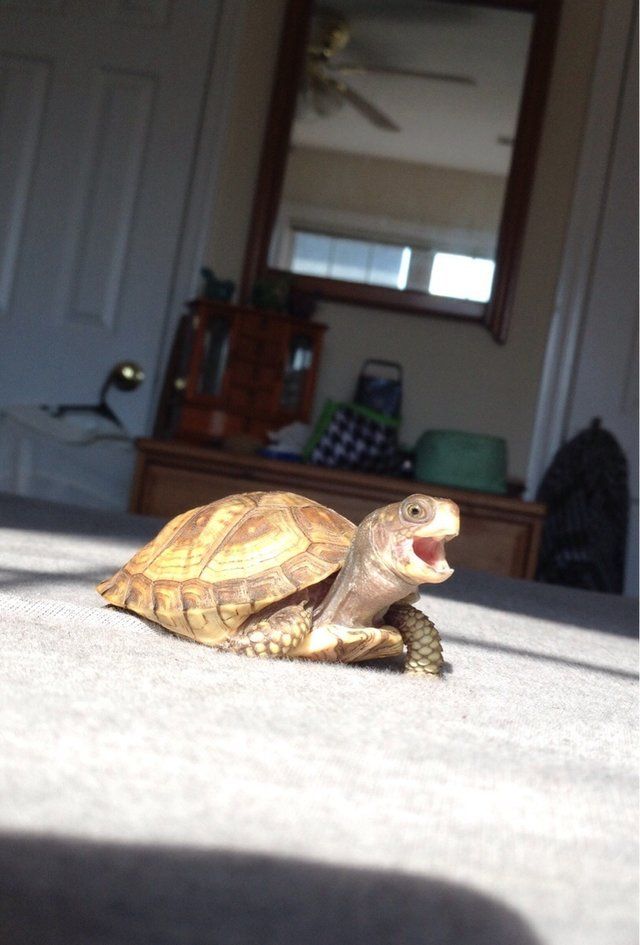 Most box turtles live in captivity for at least 20 years.
Most box turtles live in captivity for at least 20 years.
With that in mind, you should only get a baby box turtle if you are ready for the long-term commitment. Even thought it won’t require a lot of work on a day to day basis, you are in it for the long run. As mentioned earlier, a baby box turtles early years are extremely important. It is important that you have all of the right turtle accessories.
Once a box turtle hits the maturity age, the chance of early death is reduced. In their natural habitat, baby box turtles save themselves from any attack by simply hiding and closing their shell.
You can help your baby turtle live its best life! A healthy and happy baby turtle can save you from a lot of stress in the long run.
Take care of your baby box turtle by providing them with the best enclosure, warm light, moist temperature, and healthy food.
After all, it’s really hard to find anything more adorable than a baby box turtle! If you want to read more, you should check out this article on
Best of luck!
- Dillon
- Box Turtles, Guides
Box Turtle Feeding Diet
Box Turtles In captivity they can be finicky eaters and although it is relatively easy to keep one as a pet, finding the right diet for the box turtle is often difficult. As difficult as it may be, finding the right box turtle food is the single most important thing you can do for your pet if you want it to live a long and healthy life.
As difficult as it may be, finding the right box turtle food is the single most important thing you can do for your pet if you want it to live a long and healthy life.
What do box turtles eat?
When Easter Box Turtles and other varieties of Box Turtles live in the wild, their metabolisms go through many fluctuations. Seasons, natural food availability, temperature and lighting all play a role in how and what a turtle eats. These natural changes are no longer part of a turtle's routine when living in captivity, and it can become confused and/or very picky about what it eats.
Related Articles
- Box Turtle Pictures
- Oscar Fish Pictures
- Betta Fish Pictures
In nature, the box turtle usually hides in its shell and waits for better feeding conditions if food is not available. This does not happen in captivity. If a captive turtle is fed regularly, it will begin to deteriorate, eventually weaken and die.
Box turtles are omnivores
Box turtles are omnivores, which means they eat anything, including vegetables, fruits, and meats. Although they can eat a wide variety of foods, they should never be fed food that they would not otherwise find in nature. This means that you should not feed your box turtle hamburgers, hot dogs, potato chips, or other foods specifically made for humans.
Proper Diet for Box Turtles
Box turtles have a list of foods to eat.
Feed Your Box Turtle 75 Percent Vegetables
The box turtle can eat a wide variety of foods, but should make up the majority of its diet with fresh vegetables, preferably dark leafy vegetables.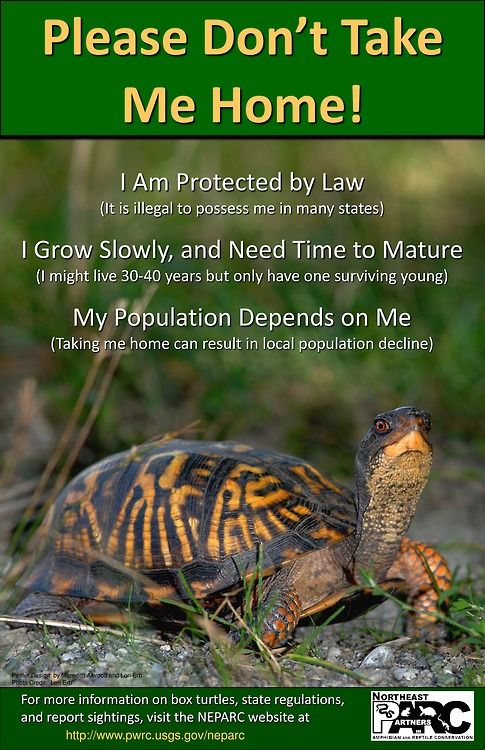 A good selection of vegetables to feed the box turtle:
A good selection of vegetables to feed the box turtle:
- Cabbage
- Romaine lettuce (not iceberg)
- Cabbage Greens
- Dandelives (stems, leaves and flowers)
- Greeds of mustard
- spinach (only occasionally)
- Broccoli stems (only occasionally)
- Pods of pea
- corn (only in the Arts)
- Beets
- Carrots (shredded, not chopped)
These vegetables should make up 75 percent of your box turtle's diet.
difference between automatic and manual
Fruit should make up 12.5% of a common box turtle's diet
Box turtles also eat many types of fruit, but surprisingly, they should not eat too much of it because fruits do not contain vitamins and minerals needed for health and the well-being of the turtle. The following fruits should only make up about 12.5% of a turtle's diet:
- Strawberries
- Bananas
- Grapes
- Mangoes
- Papaya
- Tomatoes
- kiwi
- melons (without seeds)
- Mixed berries
- Persians
Diets of the box and a little natural proteins are required to be slightly health protein, but not much.
 Protein should make up the remaining 12.5% of the turtle's diet. It is best to feed your box turtle the proteins it is commonly found with in the wild, including:
Protein should make up the remaining 12.5% of the turtle's diet. It is best to feed your box turtle the proteins it is commonly found with in the wild, including: Box Turtle Ready Foods
There are many brands of dry turtle food on the market, most of which claim to be “nutritionally complete”, but this should not be the only food for turtles. They can be added to a turtle's diet as a supplement, but are not recommended as a sole food source. Before feeding your turtle dry food, soak it in warm water for about 30 minutes to soften it up.
Box Turtle Vitamin Supplement
It can be very difficult to come up with a diet that meets your turtle's nutritional needs and also one that the little guy would actually eat. Therefore, many experts agree that vitamin supplements are beneficial for most captive turtles, especially if kept indoors. Sprinkle your pet's food with a quality reptile multivitamin supplement a couple of times a week.
Box Turtle Feeding
Box turtles are best fed in the morning and afternoon as these are the times of the day when they are most active and warm. How often and how much you feed your box turtle depends on their age:
- Adult box turtles should be fed at least three times a week, at meals every other day or every other day. If you are unsure of the frequency, check with your veterinarian.
- Young and baby box turtles should be fed daily and supplemented with vitamins and calcium at least three times a week.
- A variety of food should be given at each feeding and you should remove any uneaten parts after about 15-20 minutes although live food such as insects may remain.
- If you have a hibernating box turtle, you won't need to feed it during its hibernation months, but it should always have access to water.
- Depending on your turtle's temperament, you may need to feed him in the hiding place if he is shy. If you are keeping more than one turtle together, you will also need to feed them on separate plates or feeding areas, or even separate them completely if one of them is preventing the others from eating.

Change your box turtle's diet regularly
Ideally, your box turtle's diet should be changed frequently. If you feed the same thing day after day, the turtle will get tired and in many cases will go on a hunger strike. Change the turtle's diet so that it eats different foods on different days. This will help ensure that your pet is interested in feeding times as well as providing a proper and balanced diet.
Terrapene carolina (Carolinian box turtle) - Turtles.ru
Description
The length of the carapace of a box turtle is up to 20-23 cm. Turtles have a very large domed shell. The color of these reptiles is quite bright - bright yellow spots and stripes stand out sharply against a dark gray background. The iris of the eyes is especially beautiful, which in males has a bright red color, and in females it is reddish-brown. In small turtles, the sex can be distinguished by color (males are darker, females are lighter), and with age, the concavity of the plastron becomes more and more pronounced in males and the tail becomes larger. The carapace of males is lower than that of females.
The iris of the eyes is especially beautiful, which in males has a bright red color, and in females it is reddish-brown. In small turtles, the sex can be distinguished by color (males are darker, females are lighter), and with age, the concavity of the plastron becomes more and more pronounced in males and the tail becomes larger. The carapace of males is lower than that of females.
There is a hinge on the plastron, with the help of which turtles protect themselves from natural enemies: the front part of the plastron covers the head and front paws, pulls the rest of the plastron to the carapace, thereby covering the tail and hind legs. The ability to completely hide in the shell is reflected in the name of this type of turtle - box turtle. In young Carolina tortoises, the hinges on the plastron do not work, so for self-defense, they emit a smell that repels predators.
Terrapene carolina carolina - The carapace is short, wide and brightly colored. Marginal shields almost vertical and slightly overhanging. There are four toes on the hind legs.
There are four toes on the hind legs.
Terrapene carolina major - The largest subspecies with an elongated carapace and four toes on the hind legs. The pattern on the carapace is either absent or represented by an indistinct reddish-brown pattern. Rib on marginal shields well developed.
Terrapene carolina triunguis - Carapace tawny or olive indistinct pattern. There are orange or yellow spots on the head and front legs. Males often have a red head. The hind feet usually have 3 toes.
Terrapene carolina bauri - Carapace with a bright pattern of light radial lines. There are three characteristic lines on the head. The hind feet usually have three toes.
Terrapene carolina yucatana - Tall, domed carapace, tawny or straw in color with dark rays and dark scutes margins. The third vertebral shield protrudes in the form of a hump. Heel marginal shields protrude slightly. There are four toes on the hind legs.
Terrapene carolina mexicana - Carapace elongated, high, domed.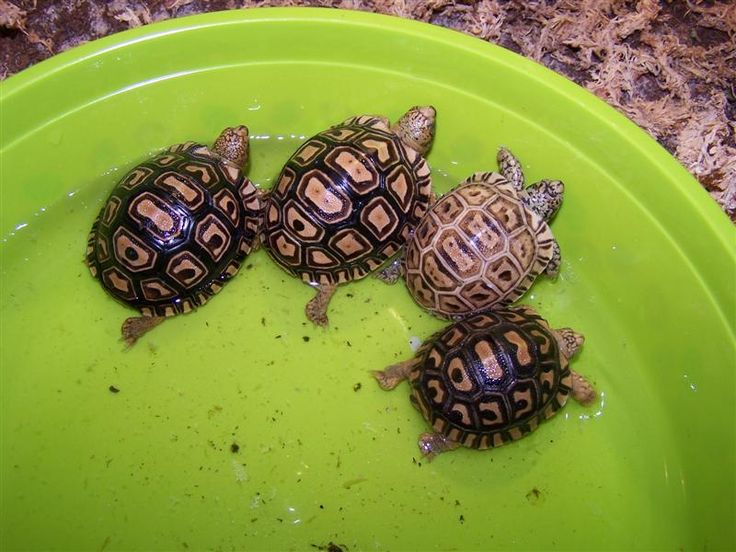 The third vertebral shield protrudes in the form of a hump. Posterior marginal shields moderately projecting. Hind feet with 3 toes.
The third vertebral shield protrudes in the form of a hump. Posterior marginal shields moderately projecting. Hind feet with 3 toes.
Habitat
Caroline tortoises (as the name implies) live in the United States (from south Maine south to Florida including the Florida Keys and west to Michigan, Illinois, Kansas, Oklahoma and Texas) and Mexico (near the Mexican bay). There are also populations in New York State.
Despite belonging to freshwater turtles, Terrapene carolina is more like land reptiles. She lives in different biotopes: semi-deserts, forests, thickets, meadows. Basically, turtles settle on the banks of a large reservoir, more often in forests than in open areas.
Lead an active lifestyle. In the morning and evening there is a peak of activity and a period of rest in the middle of the day. They are most active during heavy rains and cloudy weather.
She spends all the time on land, only in very rare cases she enters the water. During the heat, it burrows into the ground.
It also hibernates on land, burrowing into soft soil or leaf litter, while digging with its front legs (and when laying eggs, with its hind legs). If the temperature drops sharply for several days, the turtle may freeze, its heart will stop, but the turtle will not die.
Food
Turtles eat earthworms, newborn mice, liver, fish, mollusks, insects, as well as plant foods: greens, lettuce, carrots, mushrooms, berries. Turtles also eat poisonous mushrooms without any visible harm to their health. It is possible that this is why there have been cases of poisoning people with the meat of Caroline tortoises. Give the vegetable mixture along with fish or meat.
Breeding
Breeding starts in spring. Males attract the attention of females by biting them, as well as colliding with them with their shells. In May-July, females lay from 2 to 7 (1-11) eggs in one nest. During the season there can be up to 5 clutches, although more often 1-2. In autumn, young turtles hatch from them and, not appearing on the surface, remain to winter in the nest until the next spring.



